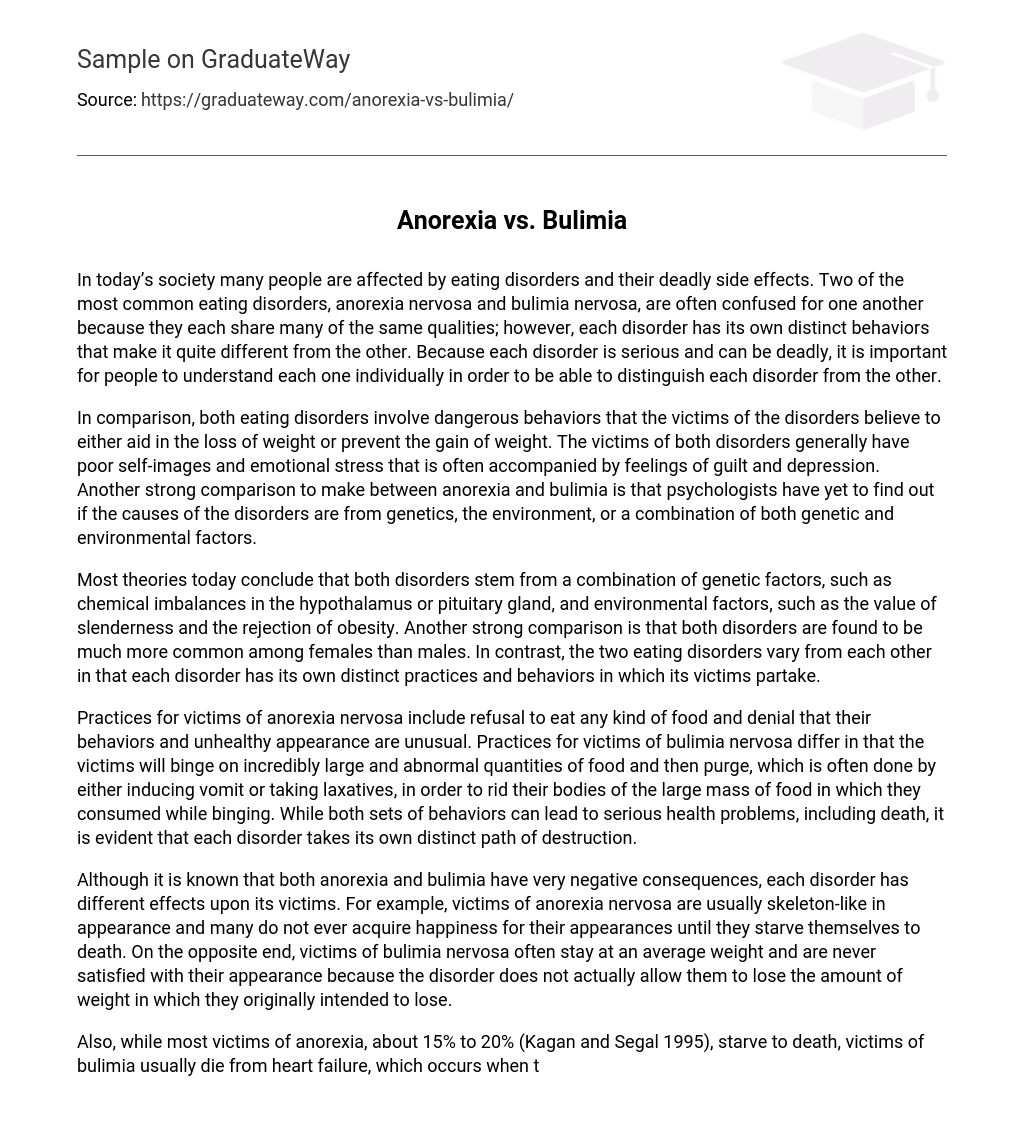Eating disorders are common in society and can be very dangerous. Anorexia nervosa and bulimia nervosa, two often misunderstood disorders, have similarities but also different behaviors that set them apart. Because both disorders can be extremely serious and potentially fatal, it is important for people to understand each disorder separately in order to accurately tell them apart.
Both anorexia and bulimia are types of eating disorders that involve harmful behaviors aimed at achieving weight loss or avoiding weight gain. People with these disorders often experience low self-esteem, emotional stress, guilt, and depression. The causes of these disorders, whether they are genetic, environmental, or a combination of both, have not been determined by psychologists.
Both anorexia nervosa and bulimia nervosa are thought to be caused by a mix of genetic and environmental factors, such as chemical imbalances in the hypothalamus or pituitary gland, societal pressure to maintain a thin physique, and bias against being overweight. Furthermore, both conditions primarily affect females rather than males. Nevertheless, despite these commonalities, each disorder has its own unique set of practices and behaviors.
People suffering from anorexia nervosa exhibit behaviors such as refusing all food and denying their unhealthy appearance and abnormal actions. Conversely, individuals with bulimia nervosa engage in different practices which include consuming excessive amounts of food and then purging, either by inducing vomiting or using laxatives to eliminate the excess food. While both disorders can lead to serious health complications, even death, it is evident that each disorder follows its own unique path of devastation.
While both anorexia and bulimia have adverse effects, they impact individuals in distinct ways. Those with anorexia nervosa often exhibit extreme thinness and are never satisfied with their appearance unless they engage in self-starvation. On the other hand, individuals suffering from bulimia nervosa usually maintain a normal weight but consistently feel unhappy with their body image because the disorder hinders them from achieving desired weight loss.
Kagan and Segal (1995) state that approximately 15% to 20% of people with anorexia perish due to starvation, while those with bulimia frequently encounter heart failure caused by chemical imbalances resulting from frequent cycles of binge eating and purging, along with drug use. Despite the fact that both disorders involve a significant preoccupation with food and a deep fear of gaining weight, they impact individuals in distinct ways.
Both anorexia and bulimia are more common in females, often because of unrealistic ideals about female body sizes. These disorders have similar severe consequences and difficult treatment cycles. Anorexic individuals refuse to eat, while bulimic individuals engage in bingeing and purging, both harmful to their health.





